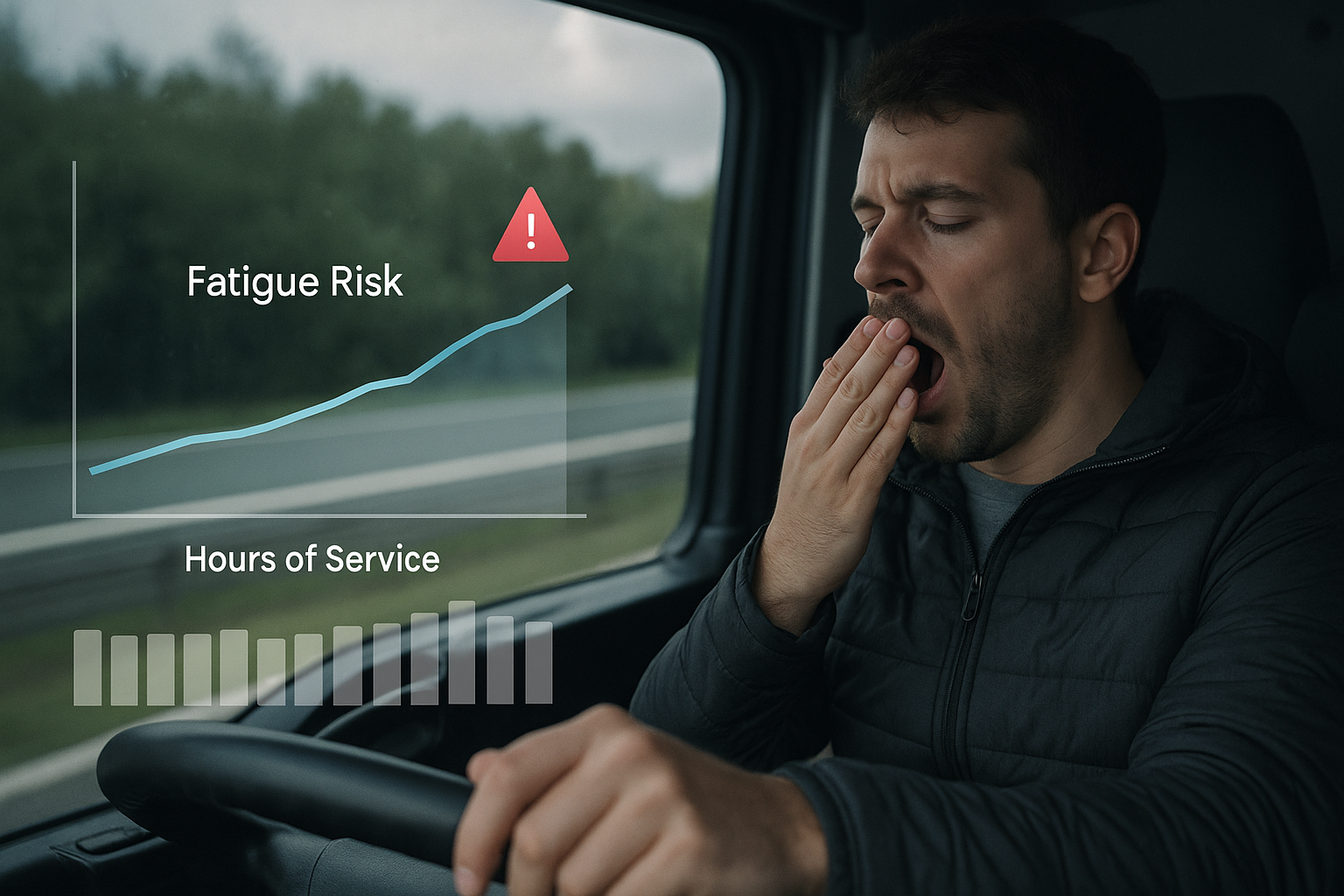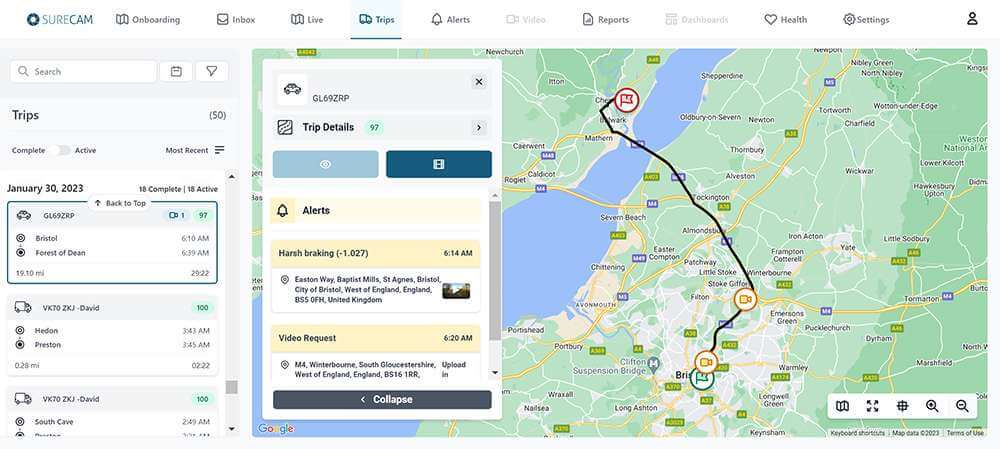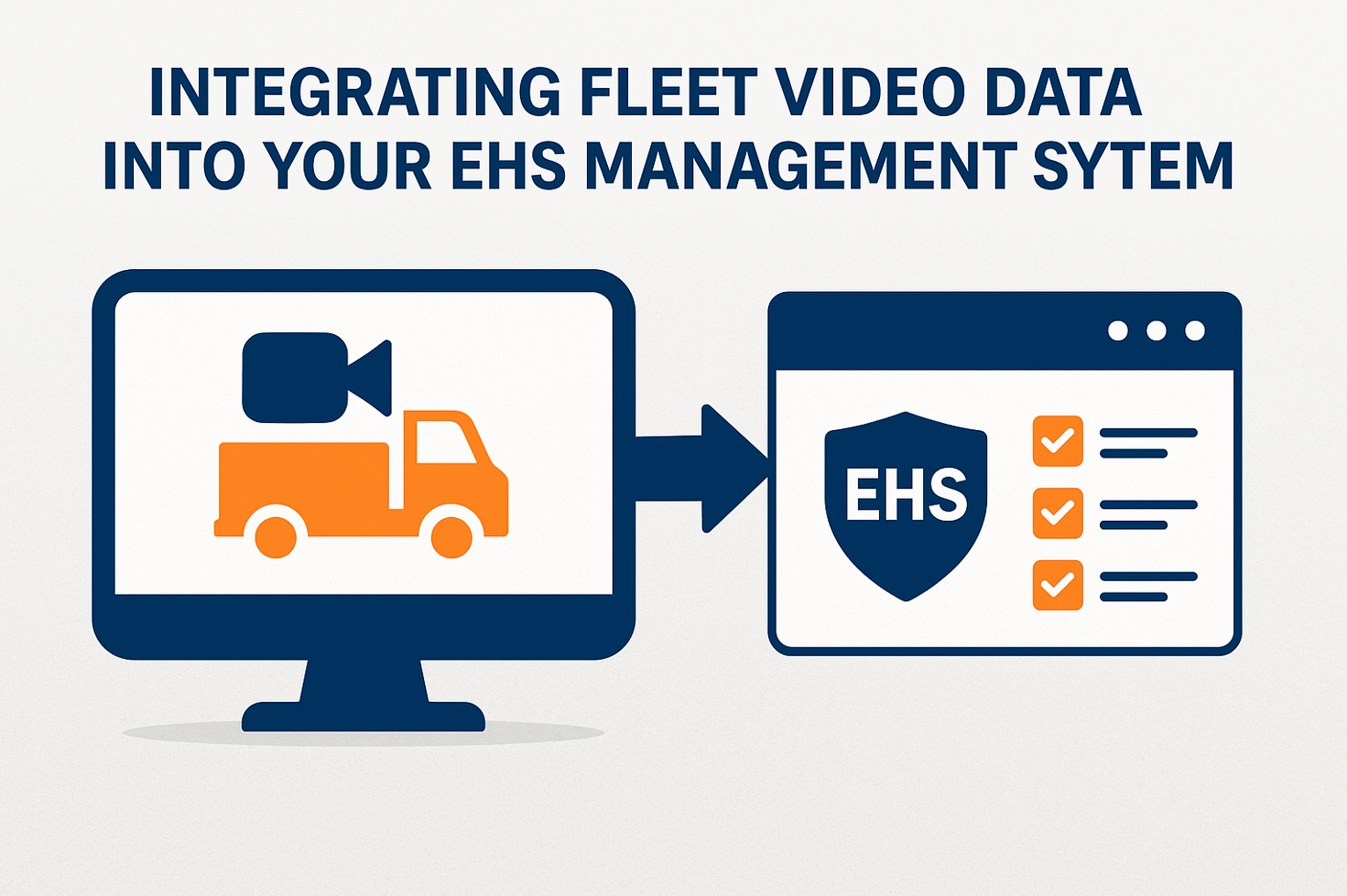Fatigue Risk Management for Drivers: Detection, Policy, & Coaching Protocols

Fatigue risk management for mobile workforces requires more than a reminder to “get some sleep.” Effective programs blend defensible scheduling rules, leading indicators, and event-based interventions to reduce crash risk, improve coaching outcomes, and document due diligence for regulators and insurers. This blog outlines a practical framework Safety Professionals can implement now—aligned to Hours-of-Service (HOS) rules, fatigue science, and proven FRMS practices.
Why Fatigue Risk Belongs on Every EHS Agenda
Drowsy driving remains a persistent and undercounted hazard. NHTSA’s Countermeasures That Work reports that 684 people were killed in 2021 in crashes involving a drowsy driver (1.6% of traffic fatalities), while acknowledging under-reporting in official data. The agency’s drowsy-driving portal underscores how often fatigue escapes detection at the scene. From an EHS perspective, these are preventable incidents tied to scheduling, sleep opportunity, and real-time monitoring.
NIOSH frames driver fatigue as a major workplace risk and encourages fatigue risk management systems to “stop the chain of events” that leads to a crash. FRMS moves beyond single controls to a layered system—policy, training, scheduling, leading indicators, and timely interventions—that Safety Professionals can audit.
Grounding the Program in Scheduling Rules (and Why They’re Not Enough)
In the U.S., HOS sets baseline constraints for property-carrying drivers: the 11-hour driving limit within a 14-hour window after 10 consecutive hours off duty, plus 30-minute breaks and 60/70-hour limits over 7/8 days. The FMCSA’s official summary details these limits and exceptions (e.g., adverse driving conditions), and the eCFR provides the controlling text. Compliance is table stakes—but not a guarantee of alertness. Biological fatigue can persist even when logs are “clean,” which is why FRMS layers are essential. Safety leaders should treat HOS as the floor and build programmatic controls above it.
Quick checklist for EHS audits
- Verify policy clarity on 11/14/60/70 rules and rest breaks
- Confirm drivers’ actual sleep opportunity, not just off-duty time.
- Identify schedules that erode circadian stability (e.g., flip-flop shifts).
- Ensure supervisors know how to escalate when a driver self-reports fatigue.
Leading Indicators: What to Watch Before an Incident
OSHA defines leading indicators as proactive, preventive measures that reveal whether safety activities work—perfect for fatigue risk. Build a scorecard that blends exposure and behavior signals you can influence ahead of a crash: schedule quality (frequency of short turnarounds and driving in the circadian low, 02:00–05:00), workload patterns (consecutive long shifts; overtime spikes), event precursors (lane departures, prolonged following, hard-braking clusters, extended eyes-off-road), self-reports & screenings (fatigue check-ins; Epworth-style self-assessments; referrals for possible sleep disorders), and program health (training completion; supervisor-coaching rate).
Set thresholds that trigger action. Example: “Two night shifts with <10 hours off + three fatigue-coded events in seven days = mandatory supervisor check-in and schedule adjustment.” Document both the trigger and the response in your EHS system. NIOSH’s Motor Vehicle Safety at Work hub has additional planning resources to support these practices.
Event-Based Interventions: Turning Signals into Action
Telematics and video help Safety Professionals catch fatigue-like patterns early: swerving/lane departures, delayed reactions (hard braking after long headway), and repeated eyes-off-road (if available). Pair detection with a three-tier protocol informed by research syntheses such as NHTSA’s Countermeasures That Work and ITF’s “Innovative Countermeasures for Driver Fatigue.”
- Real-time driver prompts. For eligible systems, in-cab alerts can cue micro-breaks (15–20 minutes off the road), caffeine strategies, and, if needed, a handoff or layover.
- Supervisor escalation. When thresholds are hit, dispatch or safety reviews recent events, confirms sleep opportunity, and modifies the route or shift.
- Post-event coaching. Within 24–72 hours, use the clip to discuss root causes, not blame—Was it shift design? A long customer dwell time? Inadequate rest-stop planning? Close with a corrective action the driver accepts and understands.
International transport research emphasizes combining engineering and administrative countermeasures—better scheduling, cab technology, and targeted training—rather than relying on any single tool.
Policy Backbone: Build (or Borrow) an FRMS
A formal FRMS policy should describe responsibilities (driver, dispatcher, supervisor, EHS), screening and training expectations, reporting paths, and data governance. You do not have to start from scratch: the North American Fatigue Management Program (NAFMP)—a collaboration involving FMCSA and Canadian partners—offers free, evidence-based modules and templates you can adapt, including sleep health, scheduling, and workplace culture. See NAFMP’s course catalog and FMCSA’s program page and evaluation. Pair NAFMP content with your HOS and collective-bargaining constraints to create a defensible, practical program.
Essential clauses to include
- Driver rights and obligations: right to stop when fatigued; duty to report fitness-for-duty concerns.
- Supervisor authority: conditions for removing a driver from service without disciplinary stigma.
- Scheduling rules beyond HOS: maximum consecutive night shifts; protected recovery sleep after nights; limits on quick returns.
- Training cadence: onboarding + annual refresh; targeted modules for dispatchers and supervisors.
- Documentation: how self-reports, events, and corrective actions are recorded and retained.
Coaching Protocols That Respect Drivers—and Change Behavior
Behavior-Based Safety works when it is collaborative and specific. Use footage and data as context, not punishment.
- Before the meeting: Review the driver’s recent schedule, sleep opportunity, and location constraints. Arrive with one or two concrete observations tied to risk (e.g., “three lane departures within 18 minutes at 03:30”).
- During the meeting: Ask open questions first—“What was your sleep window before shift?”—then agree on one behavior or schedule change (earlier stop, different rest location, avoiding the circadian low when possible).
- After the meeting: Log the action, assign a short micro-learning on fatigue, and schedule a quick check-in within two weeks.
- For repeat patterns: Involve dispatch to reshape the route or shift; if clinical signs suggest a sleep disorder, refer to your fitness-for-duty pathway.
This team-first approach aligns with NIOSH guidance to integrate policy, scheduling, and health promotion—rather than relying solely on discipline.
Implementation Roadmap (30–60–90 Days)
- Days 0–30: Assess & align. Audit HOS compliance, identify fatigue-prone routes/shifts, and select leading indicators. Publish an interim “Stop When Fatigued” escalation card and train supervisors on the triage script.
- Days 31–60: Policy & pilot. Adopt NAFMP modules; roll out a pilot FRMS policy to one business unit. Begin event-triggered coaching and micro-break protocols on night routes. Track triggers-to-actions closed.
- Days 61–90: Scale & verify. Expand training, finalize KPIs (e.g., fatigue-coded events per million miles, night-shift crash rate), and conduct a management review of policy effectiveness with corrective actions. Consider external benchmarking with AAA Foundation estimates that police-reported figures likely understate fatigue’s true prevalence.
Conclusion
Fatigue risk is not a single-point failure; it is a systems problem that touches scheduling, physiology, operations, and culture. Treating Hours-of-Service as the baseline—and then layering leading indicators with event-based interventions—gives Safety Professionals a defensible, repeatable way to shrink exposure, change behavior, and prove impact. The organizations that make durable gains are the ones that audit their schedules honestly, coach with empathy and evidence, and close the loop on every trigger with a documented action.
In practice, the path forward is straightforward: start with an honest 30-day assessment of fatigue-prone routes and shifts; pilot a clear, written FRMS with explicit thresholds and escalation steps; then scale what works while you track a short list of metrics (exposure, behavior, outcomes, and program health). When coaching is timely and respectful—and when dispatch and supervision share ownership—drivers buy in, incidents decline, and leadership can see the return in both safety and cost.
About Safety Knights
Safety Knights is a free, global community where Environmental, Health, and Safety (EHS) professionals connect, learn, and grow. Our mission is to make workplace safety a priority by providing a trusted hub for insights and resources.
Whether you're an industry expert, new to the field, or simply passionate about safety, Safety Knights is your space to thrive.
Why join Safety Knights?
- Connect with a Global Community: Share experiences, ask questions, and get real-world advice in a supportive, judgment-free zone. You can even post anonymously to ensure you always feel comfortable seeking support.
- Access 24/7 Free Support: Our community is always on. There are no membership fees or restrictions, just around-the-clock advice, discussions, and valuable resources.
- Find Everything in One Place: Explore a wealth of resources, including curated articles, podcasts, training programs, and practical guides—all carefully selected by the safety community to help you succeed in your role.
Join our dynamic community to grow your expertise, engage in meaningful conversations, and help ensure safety takes center stage.

Book a demo today!
SureCam offers GPS vehicle tracking, live video, and real-time alerts for efficient fleet management. Get a Demo




